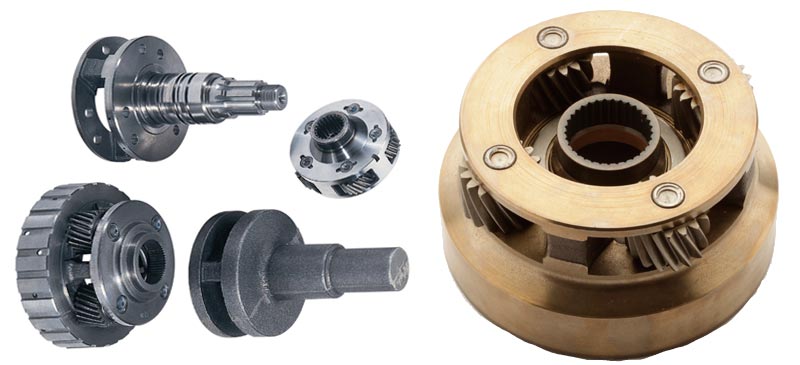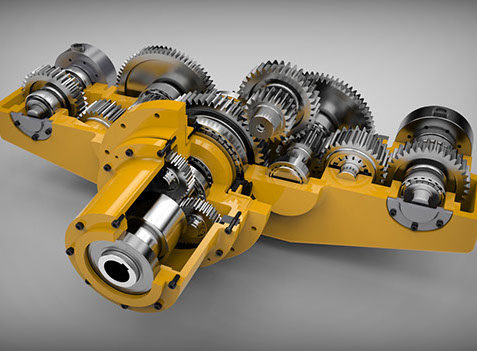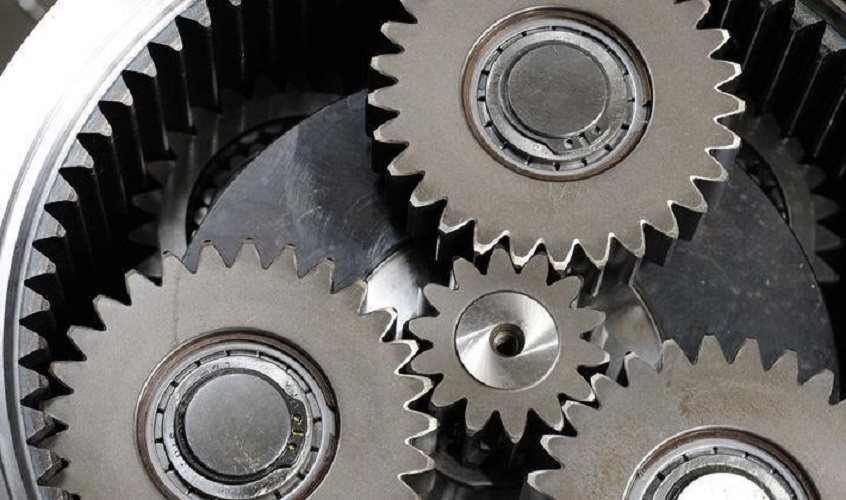Product Description
Product Description
Planetary Gear Stepping Motor :
Precision high-end upgrade with Nema8, Nema 11, Nema14, Nema 17, Nema23, Nema 24
stepper motor; low noise, low vibration, firm and durable. Increase torque at low speed.
Reduction ratio:1:3.7 , 1:5.2 , 1:14 , 1:19 ,1:27 ,1:51 , 1:71 ,1:100 ,1:139 , 1:189 ,1:264 , 1:369 ,And 48 hours delivery , in stock .
Application:
Automation control, medical equipment, textile machinery,and packaging machinery fields. Not only in the field of the automation industry, it also has a good use status in the home. Products with low speed and inertia are often seen: electric curtains, electric shutters, etc.
Product Parameters
Planetary Gear Box Specification:
| Housing Material | Metal |
| Bearing at Output | Ball Bearings |
| Max.Radial Load(10mm from flange) | 50N |
| Max.Shaft Axial Load | 30N |
| Radial Play of Shaft (near to Flange) | ≤0.08mm |
| Axial Play of Shaft | ≤0.3mm |
| Backlash at No-load | 1 stage≤1°,2stage≤1.2°,3stage≤1.5° |
20HS Hybrid Stepping Motor Specifications:
20HS1450 Planetary Gearbox Motor Specifications: |
||||||||||||||||||||||||||||||||||||||||||||||||||||||||||||||||
| Reduction ratio | 3.71 | 5.18 | 14 | 19 | 27 | 51 | 71 | 100 | 139 | 189 | 264 | 369 | ||||||||||||||||||||||||||||||||||||||||||||||||||||
| Total Height(L1+L2) (mm) | 53.4 | 53.4 | 60 | 60 | 60 | 66.4 | 66.4 | 66.4 | 66.4 | 72.8 | 72.8 | 72.8 | ||||||||||||||||||||||||||||||||||||||||||||||||||||
| Output torque ( mN.m) | 50 | 70 | 170 | 231 | 328 | 558 | 777 | 1095 | 1522 | 1871 | 2000 | 2000 | ||||||||||||||||||||||||||||||||||||||||||||||||||||
| Total Weight(g) | 91 | 91 | 97 | 97 | 97 | 103 | 103 | 103 | 103 | 109 | 109 | 109 | ||||||||||||||||||||||||||||||||||||||||||||||||||||
| Number of gear trains | 1 | 2 | 3 | 4 | ||||||||||||||||||||||||||||||||||||||||||||||||||||||||||||
| Reducer Length(L2) (mm) | 23.4 | 30.0 | 36.4 | 42.8 | ||||||||||||||||||||||||||||||||||||||||||||||||||||||||||||
| Efficiency | 90% | 81% | 73% | 66% | ||||||||||||||||||||||||||||||||||||||||||||||||||||||||||||
| 20HS6401 Planetary Gearbox Motor Specifications: | ||||||||||||
| Reduction ratio | 3.71 | 5.18 | 14 | 19 | 27 | 51 | 71 | 100 | 139 | 189 | 264 | 369 |
| Total Height(L1+L2) (mm) | 64.4 | 64.4 | 71 | 71 | 71 | 77.4 | 77.4 | 77.4 | 77.4 | 83.8 | 83.8 | 83.8 |
| Output torque ( mN.m) | 100 | 140 | 340 | 462 | 656 | 1117 | 1555 | 2000 | 2000 | 2000 | 2000 | 2000 |
| Total Weight(g) | 131 | 131 | 137 | 137 | 137 | 143 | 143 | 143 | 143 | 149 | 149 | 149 |
| Number of gear trains | 1 | 2 | 3 | 4 | ||||||||
| Reducer Length(L2) (mm) | 23.4 | 30 | 36.4 | 42.8 | ||||||||
| Efficiency | 90% | 81% | 73% | 66% | ||||||||
Detailed Photos
| Application: | Automation Control, Medical Equipment, Textile Mac |
|---|---|
| Speed: | Variable Speed |
| Number of Stator: | Two-Phase |
| Excitation Mode: | HB-Hybrid |
| Function: | Control, Driving |
| Number of Poles: | 2 |
| Samples: |
US$ 42/Piece
1 Piece(Min.Order) | |
|---|
| Customization: |
Available
| Customized Request |
|---|

How do you calculate the gear ratio involving sun, planet, and ring gears?
The gear ratio in a planetary gear system can be calculated by considering the number of teeth on the sun gear, planet gears, and ring gear. The gear ratio determines the relationship between the input speed and the output speed of the system. Here’s how you can calculate the gear ratio:
- Step 1: Count the Teeth:
Count the number of teeth on the sun gear (S), the planet gears (P), and the ring gear (R). These numbers represent the respective gear’s tooth count.
- Step 2: Determine the Gear Arrangement:
Identify the gear arrangement. In a simple planetary gear system, the sun gear is at the center, surrounded by planet gears, and enclosed by the ring gear.
- Step 3: Calculate the Gear Ratio:
The gear ratio (GR) can be determined using the formula:
GR = (R + P) / S
Where:
- R represents the number of teeth on the ring gear
- P represents the number of teeth on the planet gears (assuming they have the same number of teeth)
- S represents the number of teeth on the sun gear
The resulting gear ratio represents the speed relationship between the input and output of the planetary gear system. A gear ratio greater than 1 indicates a speed reduction, while a gear ratio less than 1 indicates a speed increase.
It’s important to note that in more complex planetary gear systems, where there are multiple sets of planet gears or additional gears, the calculation of the gear ratio may involve considering multiple gear stages and their respective tooth counts.
In summary, to calculate the gear ratio involving sun, planet, and ring gears, you need to count the teeth on each gear and use the formula (R + P) / S, where R is the number of teeth on the ring gear, P is the number of teeth on the planet gears, and S is the number of teeth on the sun gear. This calculation provides the gear ratio that defines the speed relationship between the input and output of the planetary gear system.

Can planetary gears be used in aerospace and aviation applications?
Planetary gears find extensive use in aerospace and aviation applications due to their unique characteristics and advantages. Let’s explore how planetary gears can be utilized in the aerospace and aviation industry:
- Aircraft Engines:
Planetary gears play a crucial role in aircraft engines, especially in the reduction gearbox. The reduction gearbox connects the high-speed turbine shaft with the low-speed propeller shaft, allowing efficient power transmission while maintaining optimal propeller speed. Planetary gears within the reduction gearbox help achieve the required gear ratios and torque conversion, ensuring smooth and reliable engine operation.
- Landing Gear Systems:
Planetary gears are also utilized in landing gear systems of aircraft. These gears provide the necessary torque and force to retract and extend the landing gear during takeoff and landing. Planetary gears offer compactness, high torque capacity, and the ability to handle heavy loads, making them suitable for this critical application.
- Actuation Systems:
Actuation systems in aerospace and aviation, such as those used for flight control surfaces, also benefit from the use of planetary gears. These gears enable precise and reliable movement of control surfaces, such as ailerons, elevators, and rudders. Planetary gears’ ability to handle high torques, provide accurate positioning, and withstand varying loads makes them well-suited for actuation systems.
- Satellite and Spacecraft Mechanisms:
In satellite and spacecraft applications, planetary gears are utilized in various mechanisms. They can be found in solar array drives, antenna pointing systems, and deployment mechanisms for scientific instruments. Planetary gears offer compactness, high torque transmission, and the ability to handle the extreme conditions of space environments.
- Auxiliary Power Units (APUs):
APUs in aircraft are responsible for providing auxiliary power during ground operations and in-flight emergencies. Planetary gears are often employed in APU systems to transfer power from the engine to the auxiliary systems, such as electrical generators or hydraulic pumps. These gears ensure efficient power transmission and reliable operation of the APU.
In summary, planetary gears have significant applications in aerospace and aviation. They are utilized in aircraft engines, landing gear systems, actuation systems, satellite and spacecraft mechanisms, as well as auxiliary power units. The compact size, high torque capacity, precise positioning, and reliable operation of planetary gears make them well-suited for these critical applications in the aerospace and aviation industry.

Can you describe the role of sun gears, planet gears, and ring gears in planetary systems?
In a planetary gear system, each component—the sun gear, planet gears, and ring gear—plays a crucial role in the overall operation and functionality. Let’s explore the roles of these gears:
- Sun Gear:
The sun gear is a central component in a planetary gear system. It is typically located at the center and is driven by an input source such as a motor or engine. The sun gear receives the input power and transmits it to the other gears in the system. As the sun gear rotates, it drives the rotation of the planet gears, which, in turn, contribute to the overall gear operation. The size and number of teeth on the sun gear determine the gear ratio and torque characteristics of the system.
- Planet Gears:
The planet gears are gears that surround the sun gear in a planetary gear system. They are typically smaller in size compared to the sun gear and are connected to a carrier or arm. The planet gears mesh with both the sun gear and the ring gear. As the sun gear rotates, it drives the rotation of the planet gears. The planet gears exhibit both rotational and orbital motion. While they rotate on their own axes, they also orbit around the sun gear. This combination of rotational and orbital movement allows the planet gears to transmit torque and contribute to the overall gear reduction or amplification. The arrangement and number of planet gears can vary depending on the specific design and requirements of the system.
- Ring Gear:
The ring gear is the outermost gear in a planetary gear system. It has internal teeth that mesh with the planet gears. The ring gear remains fixed or stationary while the sun gear and planet gears rotate. The interaction between the planet gears and the ring gear enables the gear system to achieve gear reduction or amplification. The size and number of teeth on the ring gear also influence the gear ratio and torque characteristics of the system.
In summary, the sun gear serves as the primary driver, receiving the input power and transmitting it to the other gears. The planet gears rotate and orbit around the sun gear, contributing to torque transmission and gear functionality. The ring gear remains fixed and meshes with the planet gears, allowing for gear reduction or amplification. Together, these gears work in harmony to achieve the desired gear ratios, torque transmission, and overall operation of planetary gear systems.


editor by CX 2023-11-03